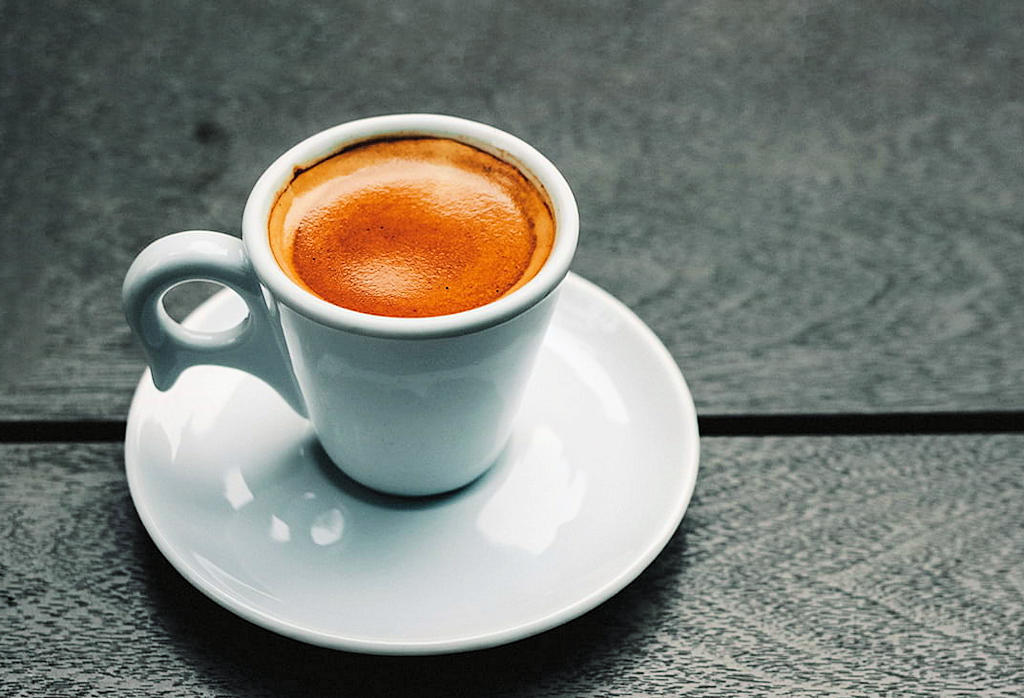Café com cheirinho is typically served in a small cup or glass, similar to an espresso. The coffee is poured first, followed by a splash of alcohol. Sometimes, the alcohol is served on the side, so the drinker can add it according to their preference. The ratio of coffee to alcohol can vary from 1:1 to 4:1, depending on the strength and taste desired.
Café com cheirinho is usually consumed as a digestif after a meal, especially during colder seasons. It is also enjoyed as an afternoon pick-me-up or as a nightcap before going to bed. Some people drink it as a remedy for colds or sore throats. Café com cheirinho is often accompanied by pastries, such as Pastéis de Nata (custard tarts) or Bolo de Arroz (rice cake).
The exact origin of café com cheirinho is not clear, but it is likely that it dates back to the 19th century, when coffee became widely available and affordable in Portugal. Coffee was introduced to Portugal by the Portuguese explorers who brought it from Africa and Asia in the 16th century. However, it was only in the 18th and 19th centuries that coffee cultivation and consumption increased significantly in Portugal, especially in Lisbon and Porto.
Coffee was initially considered a luxury item for the upper classes, but it soon became popular among the lower classes as well. Coffee houses and cafés proliferated in the urban areas, offering not only coffee but also other drinks, such as wine, beer, and spirits. These establishments became hubs of social and cultural life, where people gathered to chat, read newspapers, play games, or listen to music.
It is possible that café com cheirinho was born as a way of combining two of the most popular drinks in Portugal: coffee and wine. Wine has been produced and consumed in Portugal since ancient times, and it is an integral part of Portuguese cuisine and culture. Wine was also used as a medicine or a tonic for various ailments. Adding wine to coffee could have been seen as a way of enhancing the flavor and the effects of both drinks.
Another possible origin of café com cheirinho is that it was inspired by other European countries that had similar traditions of mixing coffee and alcohol. For example, in France there is café calva (coffee with calvados), in Italy there is caffè corretto (coffee with grappa), and in Spain there is carajillo (coffee with brandy). These drinks were also consumed as digestifs or stimulants.
Lisbon.vip Recommends
Café com cheirinho is not only popular in mainland Portugal, but also in its islands and former colonies. In Madeira and Azores, café com cheirinho is also known as café com música or bica com música (bica being the Portuguese version of espresso). The alcohol used in these islands can be local wine or spirits, such as Madeira wine or aguardente de cana (sugarcane rum).
In Cape Verde, café com cheirinho is called grogue de pontche (grog with punch) or grogue de café (grog with coffee). Grogue is a distilled spirit made from sugarcane juice or molasses. It is usually mixed with water, sugar, and lemon or lime juice to make a punch. Adding coffee to the punch gives it a darker color and a stronger flavor.
In Brazil, café com cheirinho is called café pingado (dripped coffee) or café com cachaça (coffee with cachaça). Cachaça is a distilled spirit made from sugarcane juice, similar to rum. It is the most popular alcoholic drink in Brazil, and it is the main ingredient of the famous cocktail caipirinha. Café pingado is usually served in a small cup or glass, with a few drops of cachaça on top of the coffee. Café com cachaça is served in a larger cup or glass, with more cachaça added to the coffee.
Café com cheirinho is a drink that should be enjoyed with respect and appreciation. It is a drink that represents the culture and identity of Portugal and its people. It is a drink that reflects the history and diversity of the country and its regions. It is a drink that symbolizes the friendship and hospitality of the Portuguese. Café com cheirinho is more than just a coffee with a scent; it is a coffee with a soul.



